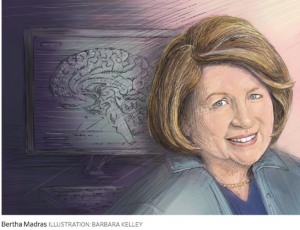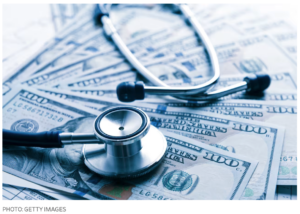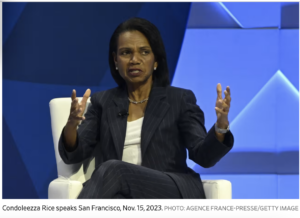
The Biden Administration wants to reclassify marijuana as a less dangerous Schedule III drug – on par with anabolic steroids and Tylenol with Codeine. The reason they want to do this is quite transparent – they want to buy the votes of young people in the next election. But is this good for these young people and the country?
When I went to college in the 1970s, marijuana was part of the counterculture. “Hippies” and other radicals of that day smoked “weed” in order to get high and generally to resist conformation to the norms of society. It was the era of the Vietnam War and young people were generally opposed to anything the government was doing. Little was known about the side effects of smoking marijuana but it was generally thought to be no worse than drinking alcohol; maybe even better.
Fifty years later the cannabis culture has gone from counterculture to mainstream. Allysia Finley, writing for The Wall Street Journal, tells us a 2022 survey sponsored by the National Institutes of Health found that 28.8% of Americans age 19 to 30 had used marijuana in the preceding 30 days – more than three times as many as smoked cigarettes. Among those 35 to 50, 17.3% had used weed in the previous month, versus 12.2% for cigarettes. That’s a radical change in the culture and in the perceived health threat of marijuana versus cigarettes.
While marijuana use remains a federal crime, 24 states have legalized it and another 14 permit it for medical purposes. Last month media outlets reported the Biden administration move to reclassify marijuana as a less dangerous Schedule III drug, but experts on marijuana and its health hazards are alarmed.
Bertha Madras thinks this would be a colossal mistake. Ms. Madras, 81, is a psychobiology professor at Harvard Medical School and one of the foremost experts on marijuana. “It’s a political decision, not a scientific one,” she says. “And it’s a tragic one.” In 2024, that is a countercultural view.
Ms. Madras has spent 60 years studying drugs, starting with LSD when she was a graduate student at Allan Memorial Institute of Psychiatry, an affiliate of Montreal’s McGill University, in the 1960s. “I was interested in psychoactive drugs because I thought they could not only give us some insight into how the brain works, but also on how the brain undergoes dysfunction and disease states,” she says.
In 2015 the World Health Organization asked her to do a detailed review of cannabis and its medical uses. The 41-page report documented scant evidence of marijuana’s medicinal benefits and reams of research on its harms, from cognitive impairment and psychosis to car accidents. She continued to study marijuana, including at the addiction neurobiology lab she directs at Mass General Brigham McLean Hospital. In a phone interview this week, she walked me through the scientific literature on marijuana, which runs counter to much of what Americans hear in the media.
For starters, she says, the “addiction potential of marijuana is as high or higher than some other drug,” especially for young people. About 30% of those who use cannabis have some degree of a use disorder. By comparison, only 13.5% of drinkers are estimated to be dependent on alcohol. Sure, alcohol can also cause harm if consumed in excess. But Ms. Madras sees several other distinctions.
One or two drinks will cause only mild inebriation, while “most people who use marijuana are using it to become intoxicated and to get high.” Academic outcomes and college completion rates for young people are much worse for those who use marijuana than for those who drink, though there’s a caveat: “It’s still a chicken and egg whether or not these kids are more susceptible to the effects of marijuana or they’re using marijuana for self-medication or what have you.”
Marijuana and alcohol both interfere with driving, but with the former there are no medical “cutoff points” to determine whether it’s safe to get behind the wheel. As a result, prohibitions against driving under the influence are less likely to be enforced for people who are high. States where marijuana is legal have seen increases in car accidents.
One of the biggest differences between the two substances is how the body metabolizes them. A drink will clear your system within a couple of hours. “You may wake up after binge drinking in the morning with a headache, but the alcohol is gone.” By contrast, “marijuana just sits there and sits there and promotes brain adaptation.”
That’s worse than it sounds. “We always think of the brain as gray matter,” Ms. Madras says. “But the brain uses fat to insulate its electrical activity, so it has a massive amount of fat called white matter, which is fatty. And that’s where marijuana gets soaked up. . . . My lab showed unequivocally that blood levels and brain levels don’t correspond at all—that brain levels are much higher than blood levels. They’re two to three times higher, and they persist once blood levels go way down.” Even if people quit using pot, “it can persist in their brain for a while.”
Thus marijuana does more lasting damage to the brain than alcohol, especially at the high potencies being consumed today. Levels of THC—the main psychoactive ingredient in pot—are four or more times as high as they were 30 years ago. That heightens the risks, which range from anxiety and depression to impaired memory and cannabis hyperemesis syndrome—cycles of severe vomiting caused by long-term use.
There’s mounting evidence that cannabis can cause schizophrenia. A large-scale study last year that examined health histories of some 6.9 million Danes between 1972 and 2021 estimated that up to 30% of young men’s schizophrenia diagnoses could have been prevented had they not become dependent on pot. Marijuana is worse in this regard than many drugs usually perceived as more dangerous. “Users of other potent recreational drugs develop chronic psychosis at much lower rates,” Ms. Madras says. When healthy volunteers in research experiments are given THC—as has been done in 15 studies—they develop transient symptoms of psychosis. “And if you treat them with an antipsychotic drug such as haloperidol, those symptoms will go away.”
(Note: More on this subject in Part II)



